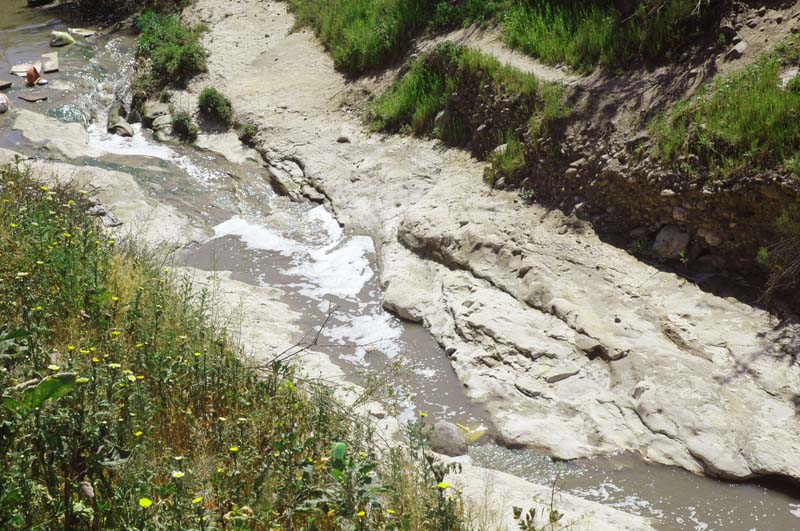|
||
Rivers transport two types of suspended sediment: (1) bed-material load, and (2) wash load.
Bed-material load is the fraction of sediment load whose particle sizes are significantly represented in the channel bed.
Wash load is the fraction of sediment load whose particle sizes are not
significantly represented in the channel bed.
The bed-material transport rate depends on the hydraulics of the flow, while the wash load concentration
is independent, for the most part, of the hydraulics of the flow.
Under steady conditions, there is a sediment rating curve, i.e., a unique relation between
water discharge and corresponding sediment discharge (bed-material only). A calculation of sediment transport rate
computes a point, or points, of the rating curve.
This sediment discharge is often referred to as the "sediment transport capacity," to denote that it is the amount of sediment
that the
river will always carry under steady equilibrium conditions.
Under unsteady conditions, the following four
scenarios are possible, and the resulting effects are noted:
An increase in the amount of sediment discharge at the upstream boundary, without a corresponding increase
in water discharge, would lead to reach aggradation.
A decrease in the amount of sediment discharge at the upstream boundary, without a corresponding decrease
in water discharge, would lead to reach degradation.
An increase in the amount of water discharge at the upstream boundary, without a corresponding increase
in sediment discharge, would lead to reach degradation.
A decrease in the amount of water discharge at the upstream boundary, without a corresponding decrease
in sediment discharge, would lead to reach aggradation.
The second case, in particular, merits careful consideration due to its significant practical implications.
This situation usually happens downstream of a dam impoundment. The dam ponds the water and retains most of the sediment.
The water subsequently released
is typically almost devoid of bed-material load; therefore, it is "hungry water." This water will have the tendency to pick up
bed-material sediment as it moves downstream.1
The "hungry water" condition is exacerbated in the case of a sediment-retention basin.
Holding on to the sediment behind the dam and releasing the water immediately, without the sediment, will produce
channel and bank
erosion downstream. Depending on the rate of water release, the amount of erosion will be commensurate with
the quantity of sediment retained at the basin. Thus,
a sediment-retention basin does not appear to be
an effective strategy for sediment control in natural streams.
|
